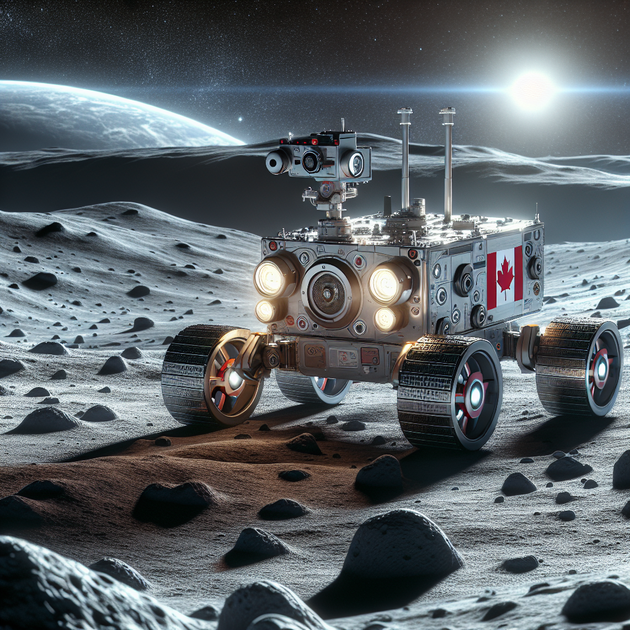Did you know that Canada has built its very first lunar rover? It might sound like something out of a sci-fi movie, but it’s real—and it could totally change the way we explore the Moon. So what makes this little robot such a big deal for space fans and scientists alike?
Canada Steps Onto the Lunar Stage
Canada isn’t new to space—remember those famous robotic arms on the Space Shuttle and International Space Station? But sending a *lunar rover* is a major step up. For the first time ever, a Canadian-built robot will actually roll around on the Moon itself.
The plan is to have this mini rover hitch a ride aboard a NASA Artemis mission (planned for later this decade). Once it lands on the Moon’s surface, its main job will be to look for water ice in those shadowy craters near the south pole. Why water? Because it means potential fuel and even air for astronauts down the road.
What Makes This Rover Unique?
Let’s break down why this Canadian lunar rover stands out:
- Small but mighty: It’s about the size of a suitcase—compact enough to fit on current rockets.
- Built tough: It has to survive freezing nights (as cold as -200°C!) and blazing hot days.
- Smart navigation: The rover can avoid rocks and craters all by itself thanks to its AI-powered “brain.”
- Water hunter: Its main science tool is designed specifically to sniff out traces of water beneath the dusty regolith.
- Proudly Canadian: The whole project is led by Canadian engineers and scientists—from design to control room back in Canada.
This isn’t just another moon robot—it’s showing off what Canadian tech can do in some of the toughest places imaginable.
The Bigger Picture: Why This Matters
You might be wondering—why send a rover now? Isn’t Mars getting all the attention? Well, with NASA’s Artemis program aiming to put humans back on the Moon soon (and maybe build long-term bases), robots like this one are essential.
Here are some ways Canada’s first lunar rover could shape future missions:
- Scout for astronauts: Finding water means less need to ship supplies from Earth.
- Pave the way for more robots: Success here could lead to even more advanced Canadian rovers exploring other worlds.
- Crew support: Rovers can map safe routes or even help carry heavy gear in rugged terrain.
Imagine you’re part of a team planning where astronauts will land next—or where they’ll set up habitats. Having detailed data from rovers makes that planning much safer.
An Unexpected Lesson from a High School Science Project
A friend once told me about her high school robotics club—they built tiny bots that followed lines taped on a classroom floor. The thrill wasn’t just seeing their creation move; it was knowing they’d solved real problems together. Now imagine that same excitement—but instead of linoleum tiles, you’ve got endless dust and craters under alien skies.
That’s what this Canadian team must feel as they prepare their lunar rover for launch. It started as an ambitious idea; now it’s paving new ground (or regolith) for explorers everywhere.
The Road Ahead for Lunar Rovers
All eyes are now on this trailblazing machine as it gets ready for its trip into space. If things go well, it’ll open doors not just for more Canadian missions but also international partnerships. There’s even talk about using similar tech on Mars or icy moons like Europa someday.
So here’s my question: If you could send any experiment or gadget along with Canada’s first lunar rover, what would you want it to discover on the Moon? Let your curiosity lead you—the next big leap in space might come from an idea just like yours.

Leave a Reply